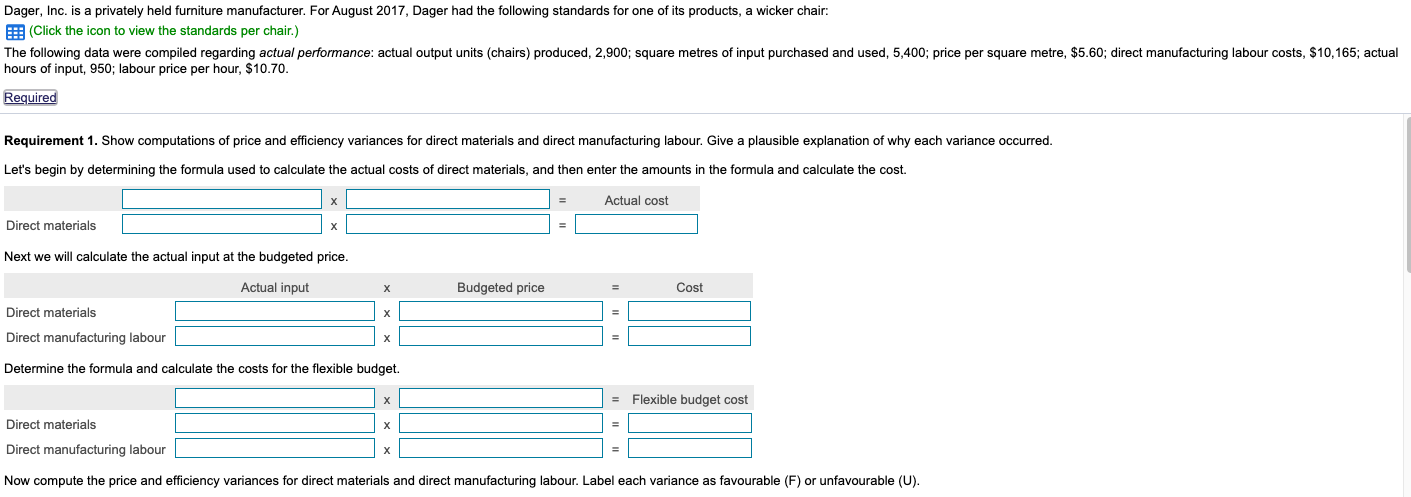




Standards per Chair per square 2 square metres of input at $ 5.40 metre Direct materials Direct manufacturing labour 0.5 hour of input at $ 10.80 per hour 1. Show computations of price and efficiency variances for direct materials and direct manufacturing labour. Give a plausible explanation of why each variance occurred. 2. Suppose 7,900 square metres of materials were purchased (at $5.60 per square metre), even though only 5,400 square metres were used. Suppose further that variances are identified at their most timely control point; accordingly, direct materials price variances are isolated and traced at the time of purchase to the purchasing department rather than to the production department. Compute the price and efficiency variances under this approach. Dager, Inc. is a privately held furniture manufacturer. For August 2017, Dager had the following standards for one of its products, a wicker chair: (Click the icon to view the standards per chair.) The following data were compiled regarding actual performance: actual output units (chairs) produced, 2,900; square metres of input purchased and used, 5,400; price per square metre, $5.60; direct manufacturing labour costs, $10,165; actual hours of input, 950; labour price per hour, $10.70. Required Requirement 1. Show computations of price and efficiency variances for direct materials and direct manufacturing labour. Give a plausible explanation of why each variance occurred. Let's begin by determining the formula used to calculate the actual costs of direct materials, and then enter the amounts in the formula and calculate the cost. Actual cost Direct materials Next we will calculate the actual input at the budgeted price. Actual input Budgeted price Cost Direct materials Direct manufacturing labour Determine the formula and calculate the costs for the flexible budget. = Flexible budget cost Direct materials Direct manufacturing labour Now compute the price and efficiency variances for direct materials and direct manufacturing labour. Label each variance as favourable (F) or unfavourable (U). Price Efficiency variances variances Direct materials Direct manufacturing labour Now give a plausible explanation of why each variance occurred. Begin with the direct material variances. The materials price variance: There was an unexpected in materials price per square metre due to competition. The materials efficiency variance: The production manager may have employed workers or the budgeted materials standards were set too The labour price variance: vin labour rates due to a The labour efficiency variance: efficient workers being employed or the use of quality materials. Requirement 2. Suppose 7,900 square metres of materials were purchased (at $5.60 per square metre), even though only 5,400 square metres were used. Suppose further that variances are identified at their most timely control point; accordingly, direct materials price variances are isolated and traced at the time of purchase to the purchasing department rather than to the production department. Compute the price and efficiency variances under this approach. Begin with recalculating the costs using the information provided for the alternative approach. Actual input Actual cost Budgeted price Flexible budget cost Purchasing Production Now compute the direct materials price and efficiency variances. Label each variance as favourable (F) or unfavourable (U). Price variance Efficiency variance Direct materials











